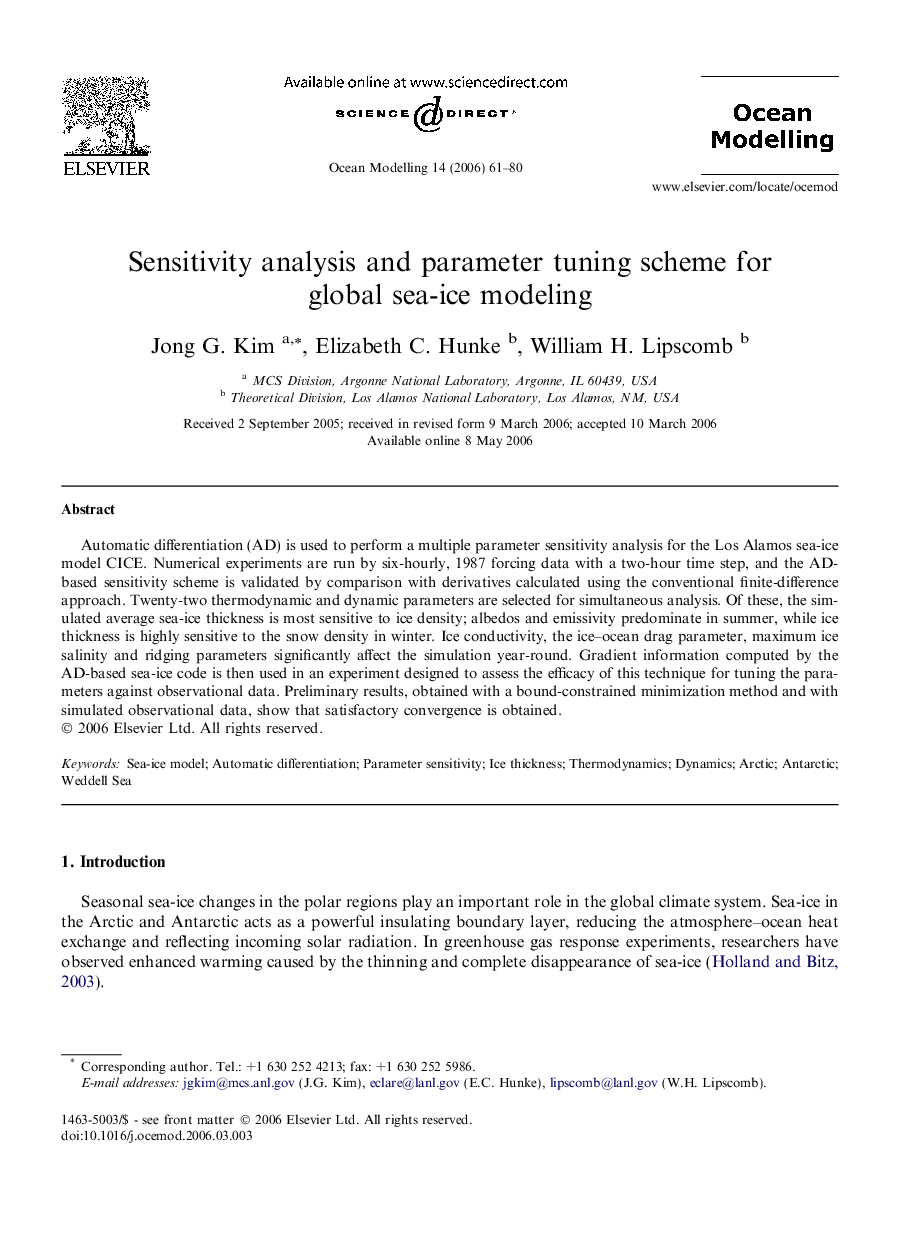| Article ID | Journal | Published Year | Pages | File Type |
|---|---|---|---|---|
| 4552791 | Ocean Modelling | 2006 | 20 Pages |
Automatic differentiation (AD) is used to perform a multiple parameter sensitivity analysis for the Los Alamos sea-ice model CICE. Numerical experiments are run by six-hourly, 1987 forcing data with a two-hour time step, and the AD-based sensitivity scheme is validated by comparison with derivatives calculated using the conventional finite-difference approach. Twenty-two thermodynamic and dynamic parameters are selected for simultaneous analysis. Of these, the simulated average sea-ice thickness is most sensitive to ice density; albedos and emissivity predominate in summer, while ice thickness is highly sensitive to the snow density in winter. Ice conductivity, the ice–ocean drag parameter, maximum ice salinity and ridging parameters significantly affect the simulation year-round. Gradient information computed by the AD-based sea-ice code is then used in an experiment designed to assess the efficacy of this technique for tuning the parameters against observational data. Preliminary results, obtained with a bound-constrained minimization method and with simulated observational data, show that satisfactory convergence is obtained.
